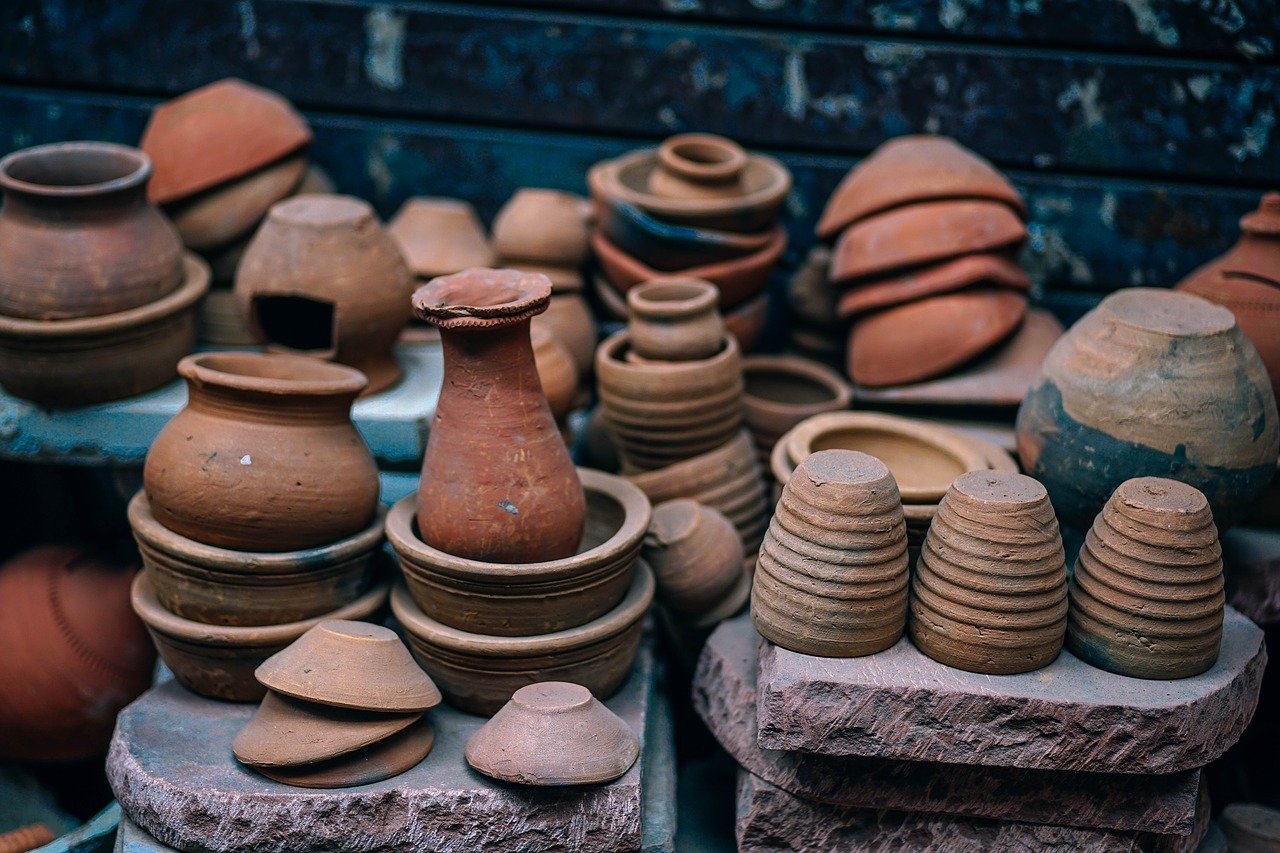How to find out who made pottery? Quick guide for beginners.
From time to time you can run into a valuable object in your grandma’s old house, your attic, basement, or maybe shed. That valuable object can be a piece of ceramics like an expensive vessel or pretty nice plate but if you don’t know where to look, it could end in the trash. With this quick and easy guide, you can identify your pottery if you follow this visual checklist.
The easiest way to find identification on your pottery is to look at the bottom. First, check the clay color. When you turn your piece of pottery upside down the only unglazed area will be the bottom of the pottery. There you can see the original color of the clay and this is the best way to start.
Every piece of ceramics has a signature or mark usually on the bottom of the piece of pottery. The main ways that identify the creator of pottery are the quality of the piece and its composition. The general confirmation is the mark.
If you are looking for a help of professional there is a couple of things you’ll need to provide:
- First would be the location where the pot was found or purchased and city or state.
- If the signature or mark is hard to read, rub something like powdered sugar, cinnamon or talc into it to increase the contrast.
We are all very excited to get to know the history of our valuable pottery, but sometimes are pretty much struggling to dig all the info, and identification from one picture isn’t always realistic.
How Can I Tell If My Vase Is Valuable?
Marks on the bottom of the vase may reveal the name of the artist or the company that made the vase. Look at the bottom of the vase and focus on the marks. Marks can tell you the name of the company or the name of the designer that made your vase. When the vase has a combination of both artist’s name and company name it is usually worth more than if it has only the company name.
Marks could be painted, inked or engraved into the bottom.

How To Identify Unmarked Pottery?
If your pottery doesn’t contain any marks, it can still be identified.
The first step is to take a look at the piece on the bottom side. Red and beige clay combined with a heavy bottom is usually American pottery, most likely Native American.
You can narrow down the clay type and color, color of the glaze and the total weight and then start searching on google with descriptive words and phrases.
Look for any painted designs on the pottery. If a piece is coming from China it is more likely to have pastel color and very complicated or detailed floral designs.
When it comes to the Blue Willow pattern from China, the design will be a blue and white willow, apple tree, or orange tree with birds and also a river, boats, and people on the bridge.
The bottom of your piece of pottery could contain information you are looking for and the design may indicate the origin of the piece.
But even with multiple sources it would be hard to find where your pottery originally came from.
What Do Numbers Mean On The Bottom Of Pottery?
Apart from the company name or artist signature, some pottery from the early stages may only contain numbers. For example, if they were produced in limited edition, most likely these pieces will have serial numbers.
For many years in American pottery, three numbers were used to identify many of the shapes. Some companies only used two numbers and some used four. These are numbers that are in the mold, and they are not handwritten.
Red Wing Stoneware Company and George Rumrill are commonly marked with numbers, and from time to time with the name. Some pieces were also marked with a letter, a dash, then a number – so items marked similar to “M-3333” are often Redwing (Murphy Era).
Some potters were using white clay, so if you find three square numbers on a pottery bottom, that could be Texas origin Gilmer or Alamo Pottery. Also, Camark pottery or Niloak from Arkansas used mostly white clay for their products.
How To Identify German Pottery?
Germany is known for its traditional beer culture, so it is not surprising that they have a huge collection of salt-glazed beer steins and jugs. Hummel porcelain figurines and Meissen porcelain dishes are also very popular. Some of them are highly attractive for collectors because of their design and beautiful colored glazes called fat lava.

Like everywhere else, we are looking at the bottom of the pottery piece. Meissen manufacture was using one of the most famous trademarks, double swords. The local library would be a great choice for a start as well as online sources.
The glassy surface and texture of an orange peel are results of salt glazing and the lava-like cratered surface is characteristic of the fat lava glaze from the period of 60s and 70s.
When salt glazing pottery, the result is often cobalt blue glaze because not many glazes can be fired at high temperatures required for this type of pottery. With this kind of pottery, language could be a small issue as most resources could be found in German.
Another recognizable motifs are from the Art Deco period with usually strongly symmetrical highly stylized geometric and natural forms and ornaments.
The art nouveau style also has significant impact because of artists such as Gustav Klimt and typical motifs are birds, insects and flowers.
In the end, we can come to the conclusion that collecting all that information could not be that easy as it sounds, but it is worth trying. You never know what kind of treasure you can find if you wipe off the dust.
For The Best Result Always Follow Simple Steps:
- Look at the bottom and check the weight.
- Check the design of the bottom and the color.
- Look at the glaze and style.
Confirm your conclusion by browsing a book, internet or consulting professional .
Have fun and good luck with pottery identifying !







